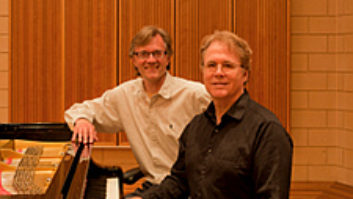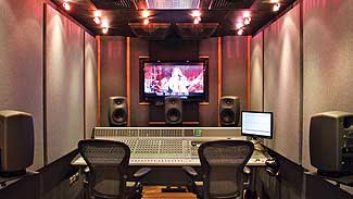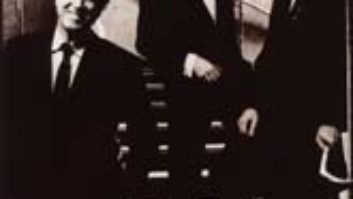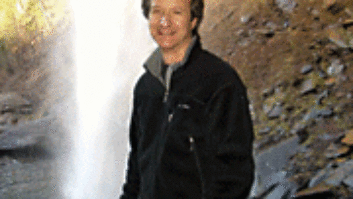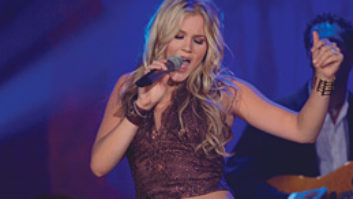When Roxy Music’s Avalon was released in 1982, it was almost immediately embraced among audiophiles as a landmark of sound production, in large part due to producer Rhett Davies and mixer Bob Clearmountain’s elegantly spacious sound. Now, more than 20 years later, the twosome have revisited Avalon for SACD 5.1 surround and created one of the finest-sounding releases of the format. The new SACD version also includes “Always Unknowing,” which was one of Clearmountain’s favorite tracks from the session but was omitted from the original album.
The choice to do Avalon as a 5.1 event was a natural choice for Clearmountain, who imagined the album being done in surround during the original stereo mixes. “At the time, I remember wishing I had more places to pan things. I pictured it being wider than it was,” says Clearmountain, who first approached Davies and Roxy singer Bryan Ferry in 2002 during the band’s first tour in many years. “When surround started to happen, I thought, ‘I have to be able to do a surround mix of Avalon, because that is the way it should of been mixed in the first place.’ I think we all felt that way.”
The undertaking wasn’t without its travails, however. In 1995, EG Records was sold to Virgin, which decided to make digital safeties of the Roxy catalog. The original Ampex analog tapes were practically unplayable and were baked and copied to a modified Sony PCM 3324 24-track recorder with Apogee filters. Along the way, the analog multis were lost. Not only were Clearmountain and Davies stuck with working off of 16-bit safeties, but they also discovered that the tapes were copied with the machine set 12 percent faster.
“I’m guessing what might of happened is that the varispeed was left in, because the guy doing the transfer didn’t really know how to work the machine and didn’t realize the varispeed was left on. When we mixed it, we had to crank the varispeed all the way in on my 3348. So that was an interesting thing that happened, and as the sample rate was set to 48 kHz, the increased 12-percent speed/clock rate gave the transfer an effective sample rate of 53.760 kHz, which obviously gave us higher-resolution safeties once we duplicated the tape speed ‘error’ upon playback. It ended up sounding fantastic.
“The audiophiles out there reading this are going to be appalled to think that we mixed something like this from 16-bit tapes. But I A/B’d it all the way through the mixing process to the original half-inch master that I mixed to, and they generally sounded better. The generation lost from the half-inch analog mix was worse than anything we lost from the 16-bit, believe it or not,” Clearmountain says with a laugh. “I think that if you A/B the mixes, you will find these to sound clearer and with more presence.”
For this project, Clearmountain used his Sony PCM 3348HR 48-track recorder, which has six ultrahigh-quality Apogee AD 8000SE 24-bit converters attached (replacing its original ones) and mixed through an SSL 4000 G+ console. “Even though both the original and the new versions were mixed on Solid State Logic 4000 consoles, SSL had made many audible improvements between the 4000 E Series used on the original and the 4000 G+ version that I’m using now,” states Clearmountain.
Concerning the surround mix of the title track, Clearmountain notes, “The most striking thing on that mix is that Andy Mackay’s sax is on the right rear and Yannick is in the left rear, and they’re playing off of each other. The band is in the front. It’s kind of like you are sitting in the middle of the stage. Andy is usually on the right side of the stage facing the band and the singer is over on the left, and I kind of imagined it that way. It’s interesting hearing those two featured elements in the back like that. I usually don’t like to put featured things in the back, but it just seemed to work quite well that way.”
To create ambient spaces in surround, Clearmountain eschews dedicated surround reverbs in favor of combinations of stereo reverbs. “I have these two short Motown-ish live, acoustic chambers in my studio that are placed left and right in the front. Then I have a Yamaha Pro R3 on a concert hall setting, which goes sort of in the middle — it’s stereo — but halfway between the front and the back. And then I have two Lexicon PCM 70s, which are stereo: One of them is front and rear left and the other is front and rear right. I also have another Yamaha 990, which is left and right in the back, set on a custom dark, ambient room setting. So between those, I have a lot of different places to put things and it gives me a lot of versatility and makes things very interesting.
“It was such an amazing experience mixing that record [originally]. I loved going into work during those couple of weeks, where I was literally living inside the album,” remembers Clearmountain. “It was a pleasure to do, and it was such a great thing that it became almost a signature for me. I’ve had more comments on that record, by far, than any other thing that I have done in my life.”
